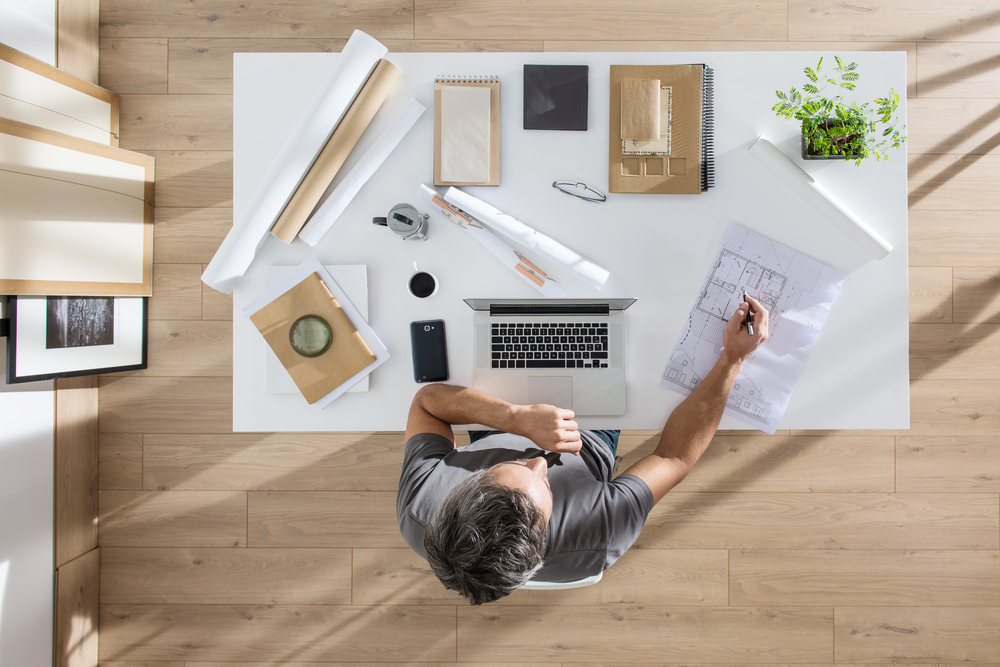 Ng Cho You is the director of ONG&ONG, responsible for the overall management of the design studio. He is a seasoned architect and town planner with over 22 years of experience in both fields, and is registered with the Board of Architects Malaysia and a Corporate Member of Pertubuhan Akitek Malaysia. Ng holds a Bachelor of Architecture (First Class) degree from The University of New South Wales, and a Masters in Urban and Regional Planning (Honours) from The University of Sydney. With the COVID-19 outbreak, he believes that technology optimisation will not only help people cope with the detrimental impacts, but also foster architecture and design business resilience.
Ng Cho You is the director of ONG&ONG, responsible for the overall management of the design studio. He is a seasoned architect and town planner with over 22 years of experience in both fields, and is registered with the Board of Architects Malaysia and a Corporate Member of Pertubuhan Akitek Malaysia. Ng holds a Bachelor of Architecture (First Class) degree from The University of New South Wales, and a Masters in Urban and Regional Planning (Honours) from The University of Sydney. With the COVID-19 outbreak, he believes that technology optimisation will not only help people cope with the detrimental impacts, but also foster architecture and design business resilience.
How has technology assisted operations in ONG&ONG amidst the COVID-19 outbreak?
As part of its globalisation strategy, ONG&ONG started digitalisation a few years ago. We have invested in cloud computing and servers, and virtual design infrastructure, which enable us to work remotely from anywhere.
As responsible citizens and employers, we have put in place measures to ensure the safety and well-being of our employees; and to comply with government regulations. Our technology has enabled us to work remotely, hence minimising social contact. We have also ensured that there are minimal requirements on their part except for a reliable broadband connection. Our colleagues have been working from home, using our existing infrastructure and subscription-based applications to support and meet the needs of our clients.
The current situation has forced us to take every reasonable effort to deliver our commitments. The way we are dealing with the pandemic will serve as a learning opportunity to rethink and redefine how we work. Effectiveness and practicalities will be prioritised and challenges will be overcome.

A well-ventilated and naturally lit space would help people cope with prolonged isolation; image by Photograpee.eu/Shutterstock
What sort of spatial design would help people cope with prolonged self-isolation?
As a design firm, we see ourselves at the forefront of design innovation to create meaningful and client-oriented spaces. To cope with crisis situations, spatial schemes should be flexible and motivating. While the design of built spaces cannot by itself solve loneliness or mental anxiety during prolonged self-isolation, the planning of spaces can help create a comfortable environment, such as a designated area that is visually connected with the outside.
The key is to allow physical isolation but not social isolation. For instance, we can design a well-ventilated and naturally lit space with an open balcony or window to connect with the outside; or create communal spaces with a contingency plan, such as one that can be partitioned to create individual isolation areas so that contamination can be minimised. Another example would be spaces that are equipped with IT infrastructure to allow virtual face-to-face interactions or streaming so dwellers will be able to stay connected.

Humans are social creature so open-plan design is still preferable because it encourages interactions; image by Monkey Business Images/Shutterstock
Do you think the trend of open-plan design will decrease after the pandemic is over?
We have been revolutionising our offices’ layouts since 2010. We combine open plans, fixed stations and hot desking. Humans are social creatures by nature. Open-plan designs are not just a trend; it is necessary to foster interactions and collaborations among workers. We do not subscribe to the idea of working in isolated environments, or the idea of designing spaces that encourage social isolation. We live in an intricate network of social interactions that allows us to grow personally and professionally. Leaving this would be regressive to humanity. The COVID-19 pandemic has taught us how precious social life is. While it is necessary to exercise caution, I do not think that designs with visual connectivity and openness will be a withering trend.
Sustainable features—such as self-sufficient water and power supply; air and water filtration systems—are believed to help bolster buildings’ resilience, especially in the current pandemic. Will these features be commonplace in the future?
Many existing building legislations have ensured that each development has connections to electricity and water, including supply reserves. While it is not mandatory, newer buildings have also adopted sustainability principles as part of the Green and healthy living agenda. It is common today to find buildings with renewable energy, and a water and air filtration system. As a designer, we will continue to advocate the use of these sustainable features. To incorporate building resiliency, such as self-sufficient water and power supply to ensure that buildings continue to function under emergency conditions, would be at the extreme end of the spectrum.

Through the optimisation of technology, architects can adapt the way they work and collaborate; image by Jack Frog/Stutterstock
How likely will the COVID-19 pandemic influence design and architecture in the future?
On a macro city planning level, we have now realised that highly dense and economically-focused city centres can be hot spots for any outbreak. It is vital to decentralise urbanised cities and to provide greater resilience and inclusiveness to nearby second or third-tier cities. This would entail a more institutionalised and equitable approach in providing amenities such as sanitation, healthcare and education facilities, as well as water and power supply and other infrastructures.
Similarly, for business sustainability, we have modernised our workforce through collaborations; specialised work outsourcing; and the incorporation of AI in parametric designs to avoid fallacies; especially in these crisis situations. While we do not foresee a drastic shift in our design paradigm, which emphasises social cohesion and environmental sustainability, we do hope to see radical changes in the way we operate, through optimisation of technology, virtual conferencing, e-training and e-governance. Ultimately, these would be the catalysts to create a generation of tech-savvy architects and clients who would be comfortable with the idea of virtual workspaces.
To improve public health and sanitation in building designs, we also hope that the industry will undertake a wider adoption of contactless and automation technologies, such as facial recognition security systems, sensor-based sanitary ware and automated access controls.
– Construction+ Online

 Malaysia
Malaysia Hong Kong
Hong Kong Singapore
Singapore Indonesia
Indonesia Tiếng Việt
Tiếng Việt








